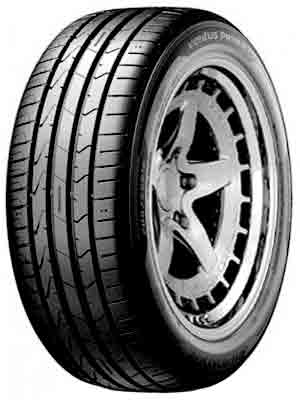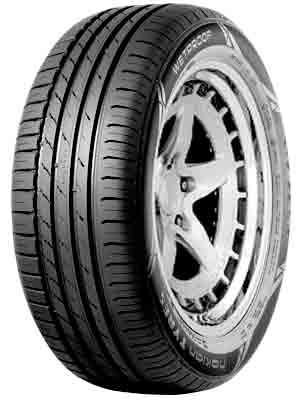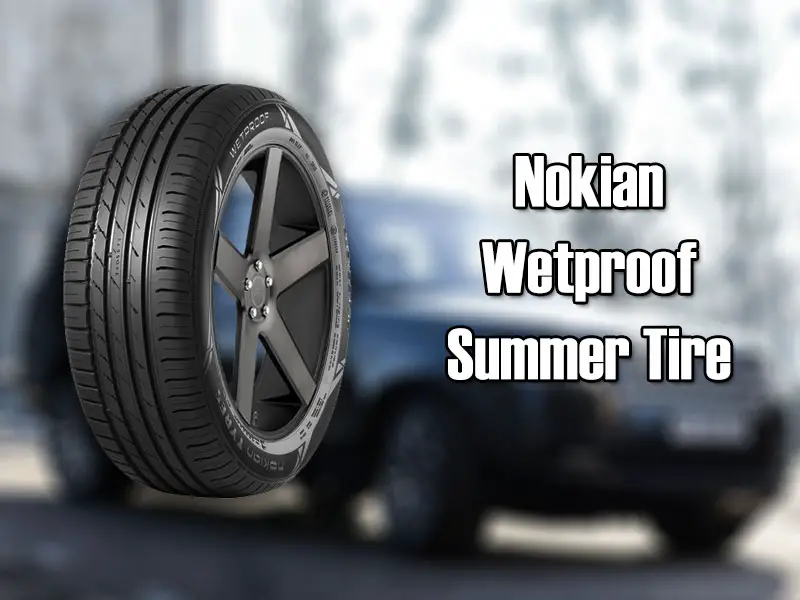Both are dedicated summer tires built for use in the hot season.
K125 shows a top performance when it comes to traction on dry and wet roads, owing to its efficient design.

While Wetproof has lower rolling resistance and accounts for a lesser noise production. It also provides increased resistance against hydroplaning and allows confident driving in rainy weather.
Table of Contents
Comparing Both Tires
Hankook Ventus Prime k125

Nokian WetProof


K125 characterizes a denser pattern of tread, comprising of three ribs divided by four continual circumferential grooves and massive shoulder lugs arranged at its margins. It exhibits sipes of different widths over ribs, the central one is marked with rectilinear sipes while the other two have slightly bent siping over them. Its longitudinal grooves are uninterrupted and are linked to lateral grooves among shoulders as well, accounting for a massive volume to capture and channel out water over wet surfaces. One of its shoulders has squared blocks with wide horizontal grooves alternatively linked with the circumferential channel while the other shoulder has rectangular blocks marked with relatively narrow slits and small tie bars form a connection among them, all grooves on this side are linked with longitudinal voids.

Wetproof has a relatively open design in which wide grooves are formed by spacing of central ribs and the hefty flat shoulders represent the classic look of a summer tire. Its longitudinal grooves are broad and three narrow ribs among them are semi-continuous circumferentially as these are interrupted at smaller distances by chisel-like sipes of different widths. Over the shoulders, wide lateral grooves alternate with narrow sipes and account for water removal. Lateral channels of only one side are connected with its circumferential grooves.
Road Grip Comparison
A denser arrangement of bulky blocks over K125 provides it with a greater contact patch to grasp strongly over the road, resultantly it shows better dry grip and covers a smaller braking distance on dry pavement. It moves 112 feet before coming to rest from 100-0 km/hr. On a wet road, its deep circumferential grooves and slightly bent sipes among blocks channel water away from the tread, offering assistance to wide central ribs for griping strongly over the surface. Hence, it shows superior biting ability on wet pavement without slipping off. On applying brakes at 100 km/hr it stops after covering only 151.5 feet.
Conversely, central ribs of Wetproof have lesser width in comparison due to which its dry grip is reduced because less surface area of tread is available to maintain a firm connection between the road and the tire. It demonstrated a comparatively longer braking distance on dry road i.e. 115 feet when stopping from 60 to 0 mph. A similar scenario has been seen over wet tracks, wide grooves wipe off water to grip over the road satisfactorily yet their ability is not as efficient as the competitor. Inefficient sipes combined with a minimal contact patch led to reduced wet grip which is displayed by a larger braking distance. Its braking on a wet road is recorded at 162 feet when it stops from 60 mph.
Handling Comparison
K125 gives a better handling experience on the dry road as wide blocks with narrow grooves over its shoulders provide a lot of grip and maintain good traction while turning. Its average speed for dry handling is 60 mph. Its well-designed shoulders play their role efficiently even when there is water standing over the road, as deep lateral voids among its shoulder blocks wipe away water and do not let the formation of the water film under its tread which can lead to sliding due to loss of traction. Its wet handling average speed is 48.5 mph.
On the other pole, rectangular shoulder blocks of Wetproof are relatively narrow, resultantly it shows less precise steer response on dry paved track because its shoulders have less grip with the ground. Its average speed is recorded at 59.4 mph for dry handling. On a wet paved surface, the capacity of its shoulders’ voids and sipes to wipe off water is lesser than its competitor. Decreased wiping ability makes its wet handling poor than the contestant. An average speed of 48 mph is recorded for its wet handling.
Comparison of Hydroplaning Resistance
K125 rolls over wet pavements with more confidence as it has a better ability to resist hydroplaning than its competitor. Its longitudinal and lateral grooves are not only deeper but are also connected which significantly increases their water channeling efficiency. It has a float speed of 50.5 mph.
Wetproof also has a reliable resistivity against hydroplaning, owing to its wide channels. However, it stands behind in the contest as lateral grooves of one shoulder are not linked to circumferential grooves and its voids have lesser ability to accommodate water in them which increases the chances of slipping over a watery surface. It has a float velocity of 50.51 mph.
Comparison of Rolling Resistance
K125 has a higher contact patch comparatively, thus, its tread needs more energy to roll as more of its surface area is rubbed over the road. Hence, higher values of rolling resistance have been recorded in the test, it faces a rolling resistance of 8.38 kgt. Its fuel efficiency is lesser than its competitor due to the higher utilization of energy for moving this tire.
Wetproof characterizes a high void ratio which benefits it in terms of ease of rolling because less surface area of tread is touching the ground. Hence less friction arises and it causes less hysteresis (energy loss) in turn. 8.07 kgt of rolling resistance has been recorded for its tested size. It provides the merit of a better fuel average due to this property.
Comfort and Noise Comparison
Both these tires make noise at a similar level, the larger width of Nokian while the greater depth of Hankook’s voids offers space for resonation of sound waves. The noise level of both these tires is marked at 67 dB in the test
However, K125 utilizes a higher contact patch to offer efficient traction on-road and account for relatively higher driving comfort. Whereas, the Wetproof stands below the competitor in terms of comfortable driving as its grip and steering ability over the paved path is minor in comparison.
Durability and Treadwear Differences
Ventus is a more durable tire, comparatively. The test shows a projected tread life up to 27,540 kilometers. Its construction consists of a high grip silica compound, a jointless full cover reinforcement with a wide steel belt layer, and a rayon carcass line. This robust structure leads to better chip and wear resistivity and causes the tread to wear slowly in comparison.
Nokian lacks in terms of durability and functional life of 26,180 km is projected for its tread in the test (an average we calculated).
Its composition includes a specialized aqua hybrid compound, polymer rubber along with silica structure, this composite enhances wet grip and reduces rolling resistance but its polymer is ranked less resolute in comparison.
Quick Summary
- Hankook Ventus and Wetproof are both summer tires.
- K125 shows superior performance while driving on road; whether dry or wet.
- Wetproof has lesser rolling resistance and proves to be fuel-efficient in comparison.
- Nokian makes less noise while rolling than its competitor.
- Prime 3 costs a lot higher than Wetproof but its tread life is longer in comparison.

